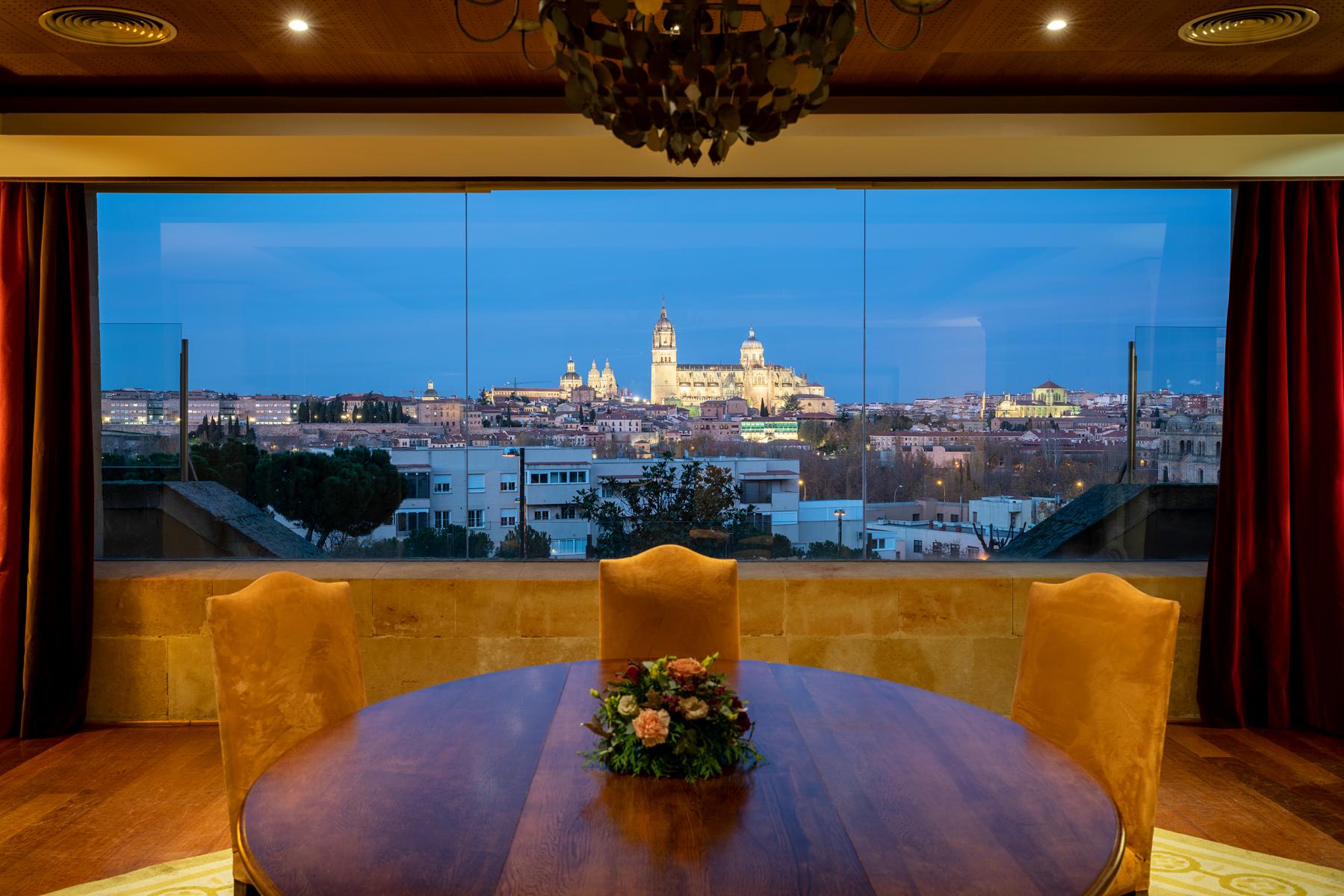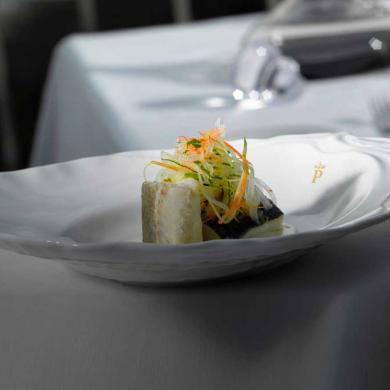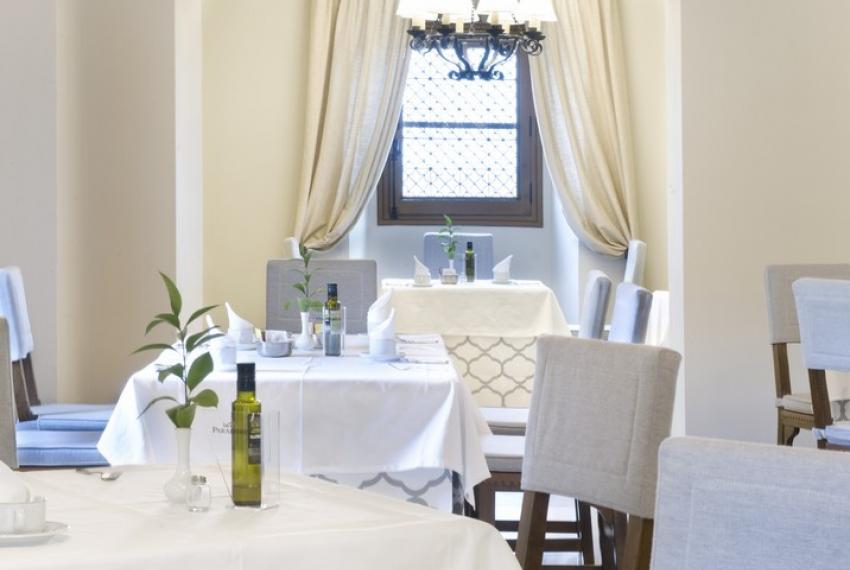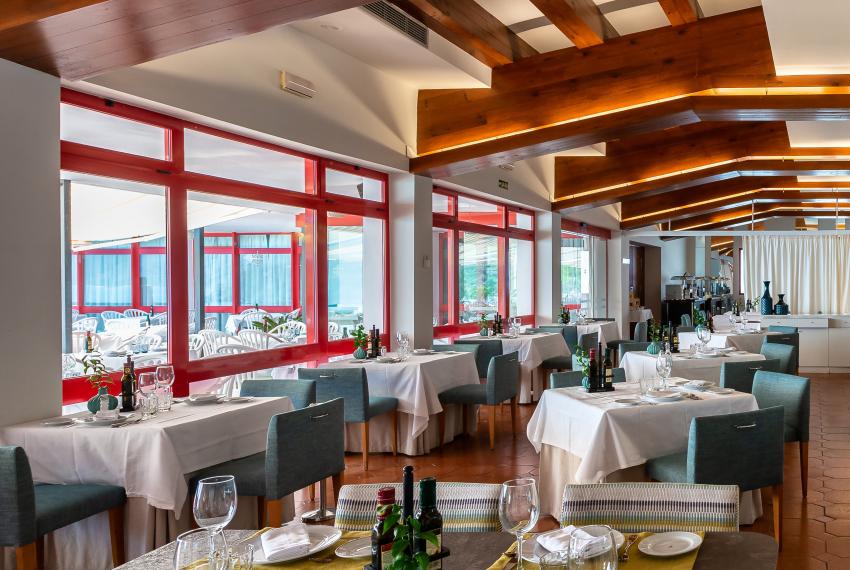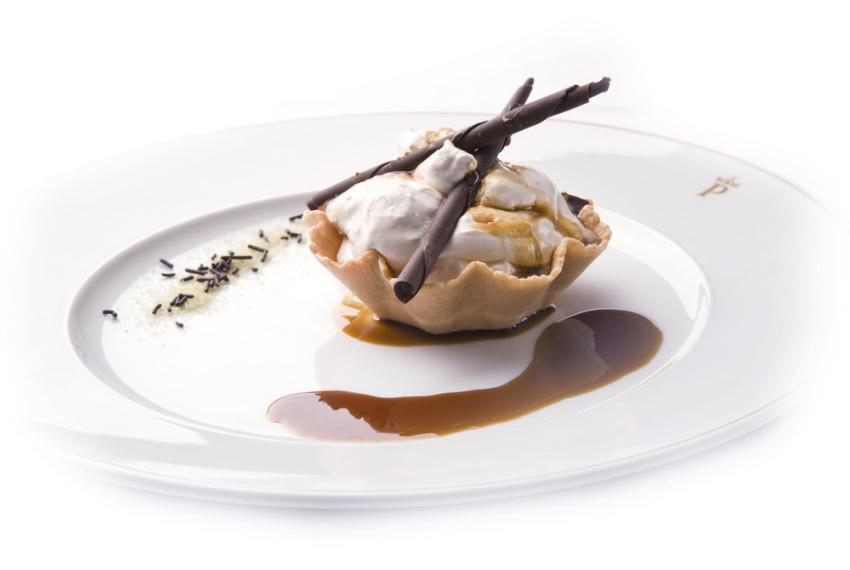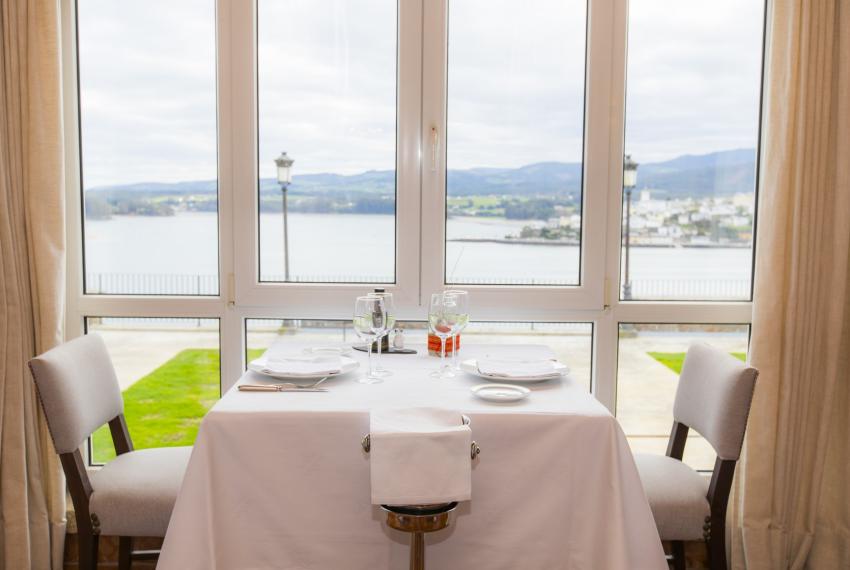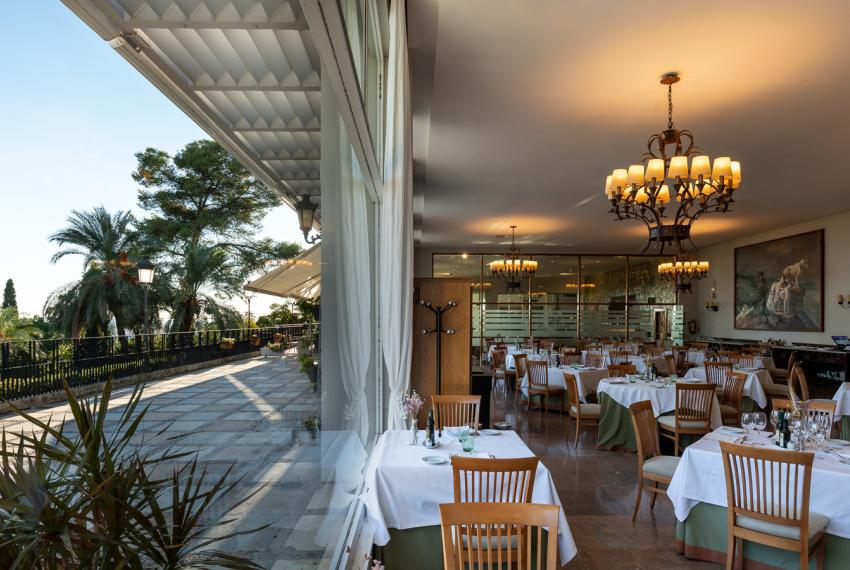Restaurant of the Parador de Salamanca
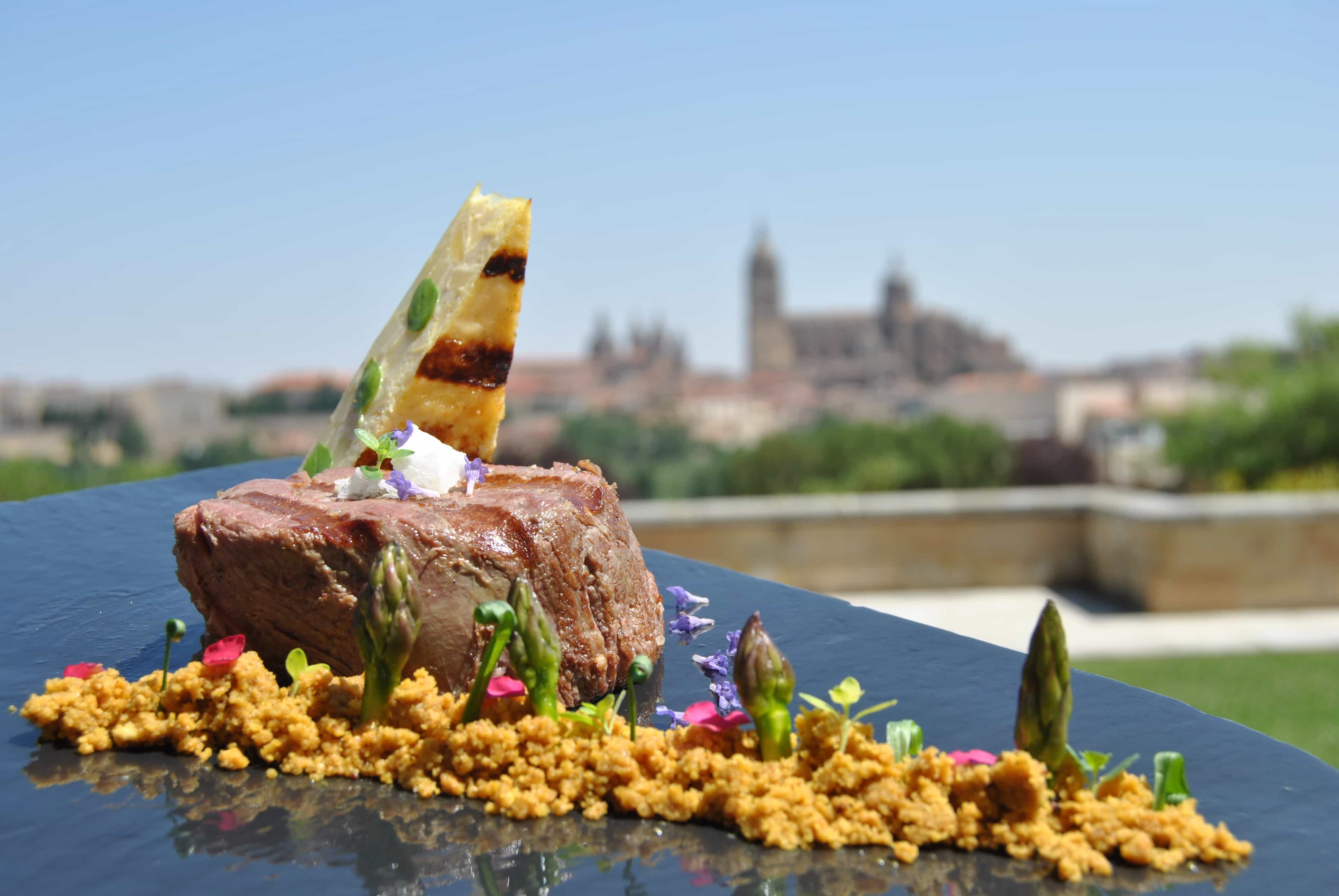
Charra gastronomy with monumental views
At the restaurant of the Parador de Salamanca you’ll enjoy Salamanca cuisine in a special luminous environment with large windows from which you’ll have a beautiful panoramic view of the historic city. The well-stocked larder, with Morucha veal, suckling pig and Guijuelo Iberian ham at the forefront.
Culinary echoes of the dehesas
The excellent meats and cured meats produced in the Salamanca dehesas, both beef and pork, are the standouts in the Parador’s cuisine. The menu features traditional stews such as La Armuña lentils, La Alberca beans and mashed paprika potatoes with pork,, along with dishes such as rice with boletus and cod loin. These dishes are all accompanied by the area’s renowned wines.
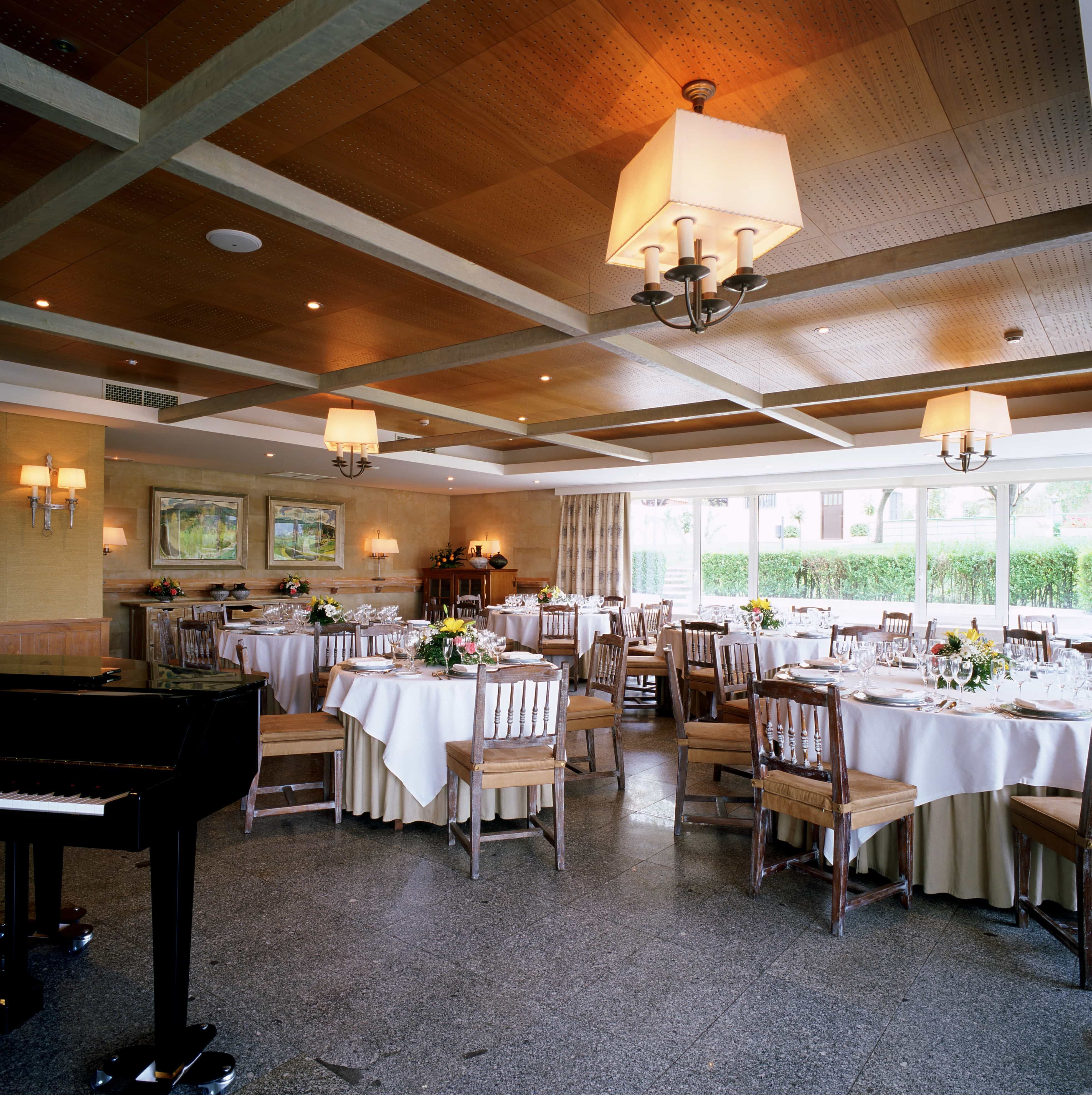
Type of kitchen
Traditional Salamanca
Specialties
Traditional roast suckling pig, grilled Moroccan veal loin.
Opening Hours
The ancient city with a university spirit
Salamanca, a World Heritage city and a lively university city, is full of historic buildings and places.Strolling around the Plaza Mayor, one of the most beautiful squares in Spain, enjoying a drink in the bars that surround it; visiting the Casa de las Conchas, which is famous for its façade; visiting the cathedrals and ascending to the outside terraces to stroll among gargoyles and bells; looking for the frog on the façade of the historic University building, the oldest in Spain: these are some of the essential activities on any visit to Salamanca.
If you want to continue exploring it, close to Salamanca you’ll find the town of Alba de Tormes, where you can visit the magnificent Basilica of Santa Teresa; and the natural surroundings of the Sierra de Béjar, a popular destination for lovers of hiking and mountains.
